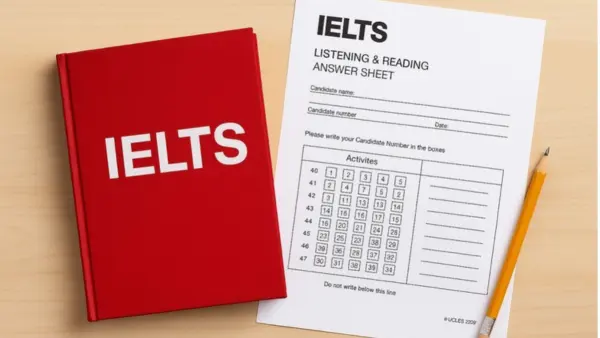
Evidence-Based Strategies – Making IELTS Teaching More Effective
-
Shadi
- Professional Growth
Teaching IELTS effectively goes far beyond drilling exam strategies. To make IELTS preparation more meaningful for learners, teachers must combine test-focused instruction with real language development, learner engagement, and pedagogical research. This article distills practical evidence-based IELTS teaching strategies you can apply tomorrow—metacognition, contextual vocabulary, formative feedback, scaffolding, interactive speaking, and a growth mindset—to drive long-term student growth and motivation.
1. Focus on Language Proficiency, Not Just Test-Taking
According to Weir and O’Sullivan (2017), IELTS is designed to reflect real-world language use. Therefore, excessive focus on test tricks may not improve scores as much as deep engagement with language. Teachers should embed authentic reading, writing, listening, and speaking tasks into their lessons. For example, reading opinion articles and analyzing their structure can help both with Reading Section and Writing Task 2.
Tip: Design lessons around real-life tasks (e.g., giving a short talk, writing an email, summarizing a chart) that mirror IELTS tasks but have genuine communicative purpose.
2. Encourage Metacognition and Learner Autonomy
Teaching students how to learn is just as important as what to learn. Research by Oxford and Nyikos (1989) highlights the power of strategy training in second language acquisition. In IELTS, this means helping students reflect on how they process questions, manage time, and approach difficult vocabulary.
Tip: Use reflective journals, self-assessment checklists, and group discussions about what works best for learners individually.
3. Teach Vocabulary in Context
Nation (2013) emphasizes the importance of vocabulary learning through rich input and recycling. Instead of isolated word lists, teach lexical chunks and academic phrases commonly used in IELTS. Show students how phrases like “on the other hand,” “it is widely believed,” or “a growing number of” function in academic writing.
Tip: Use corpus-informed tools like the Academic Word List and the COCA database to identify high-frequency IELTS vocabulary.
4. Prioritize Feedback and Formative Assessment
Brookhart (2008) shows that timely, specific, and formative feedback significantly improves learning outcomes. In IELTS writing and speaking, students benefit most when feedback goes beyond band scores and addresses organization, coherence, and task response.
Tip: Give feedback in stages: first on content/organization, then language accuracy. Use models and guided rewriting for Writing Task 2.
5. IELTS Teaching Strategies: Scaffold Complex Tasks
Effective IELTS teachers break down difficult tasks into manageable steps. This is especially helpful in Writing Task 1 (Academic), which students often find confusing. Vygotsky’s Zone of Proximal Development (ZPD) supports this approach: learners need guidance to move from what they can do alone to what they can do with help.
Tip: Model and co-construct paragraphs with students before asking them to write independently. Use sentence frames to support less confident learners.
6. Promote Speaking Confidence Through Interaction
Speaking fluency improves through frequent, meaningful use. Goh and Burns (2012) advocate for task-based speaking activities where students negotiate meaning. Teachers should create a safe environment for repeated speaking practice, both planned (e.g., mock interviews) and spontaneous (e.g., opinion sharing). These classroom routines are among the most effective evidence-based IELTS teaching strategies for building fluency and confidence.
Tip: Use speaking circles, peer interviews, and timed mini-presentations to mimic IELTS Speaking Part 2.
7. Embrace a Growth Mindset
Dweck (2006) showed that learners who view ability as developable rather than fixed are more resilient. IELTS teachers should foster this mindset by normalizing struggle, celebrating progress, and highlighting effort.
Tip: Share stories of real students who improved over time. Encourage goal-setting and reflection instead of just chasing band scores.
🧠 Final Thoughts
Effective IELTS teaching means balancing exam techniques with deeper language and skill development. By grounding classroom practices in research and focusing on learner needs, teachers can make IELTS preparation not only more effective—but more human, rewarding, and empowering.
References
- Brookhart, S. M. (2008). How to Give Effective Feedback to Your Students. ASCD.
- Dweck, C. (2006). Mindset: The New Psychology of Success.
- Goh, C. C. M., & Burns, A. (2012). Teaching Speaking: A Holistic Approach. Cambridge University Press.
- Nation, I. S. P. (2013). Learning Vocabulary in Another Language. Cambridge University Press.
- Oxford, R. L., & Nyikos, M. (1989). Variables affecting choice of language learning strategies. Modern Language Journal.
- Weir, C., & O’Sullivan, B. (2017). Assessing English on the global stage: The British Council and English language testing, 1941–2016. Equinox Publishing.
- Vygotsky, L. S. (1978). Mind in Society: The Development of Higher Psychological Processes.
FAQ
Q: How can I teach vocabulary in chunks using AWL/COCA—without word lists?
A: Select 8–12 high-frequency chunks, teach in context, then recycle via retrieval practice across reading → speaking → writing during the week.
Q: How do I balance exam strategies with real language development in a 90-minute lesson?
A: Use a simple arc: brief input and contextual vocabulary, a guided IELTS-like task with modeling and pair work, then short, formative feedback and a minute of reflection. This keeps exam focus while building genuine language proficiency.
Q: What classroom tasks mirror IELTS yet feel real-world?
A: Use purposeful tasks such as writing a complaint email, summarizing a short article, giving a two-minute talk with prompts, or comparing data from a simple chart. These map cleanly to IELTS tasks while sustaining authentic communication.
🎓 Ready to apply these ideas? Explore our ready-to-teach IELTS Lesson Plans, dive into more teacher articles, or scroll down to the footer and join the Teacher Newsletter for monthly, research-backed tips and printable tools.





